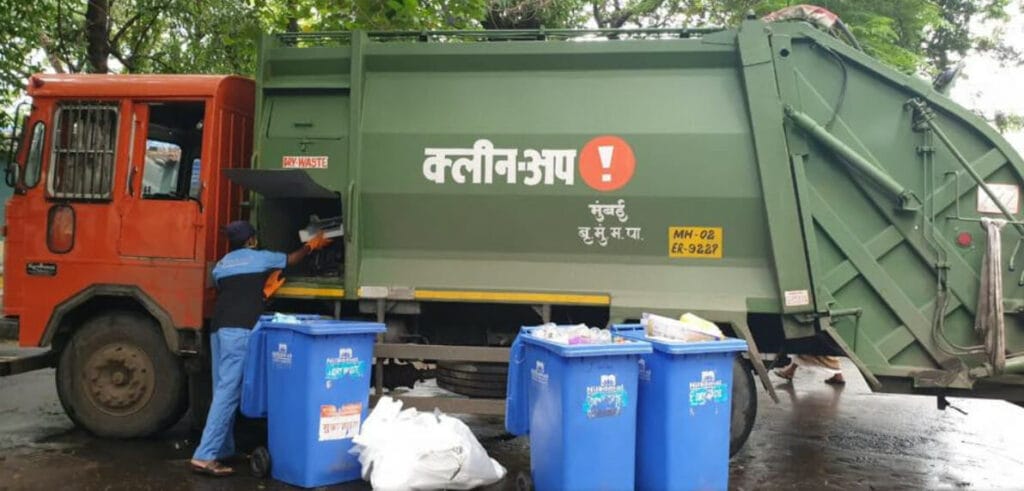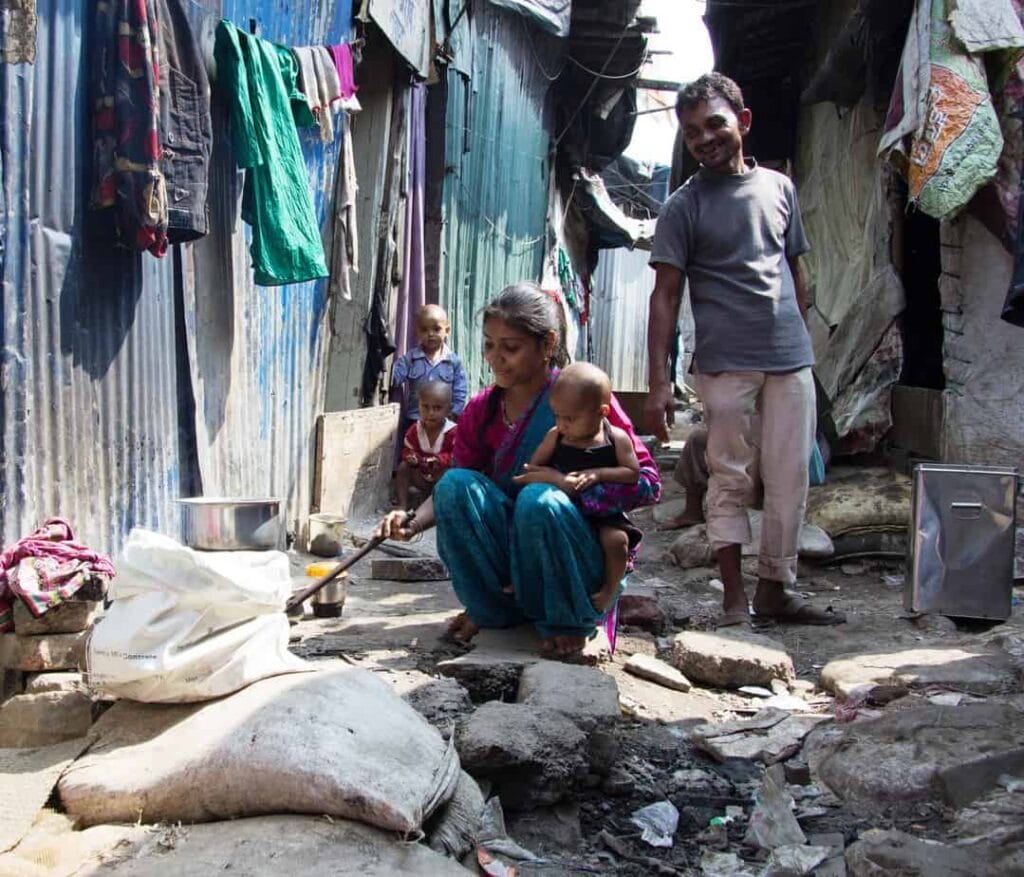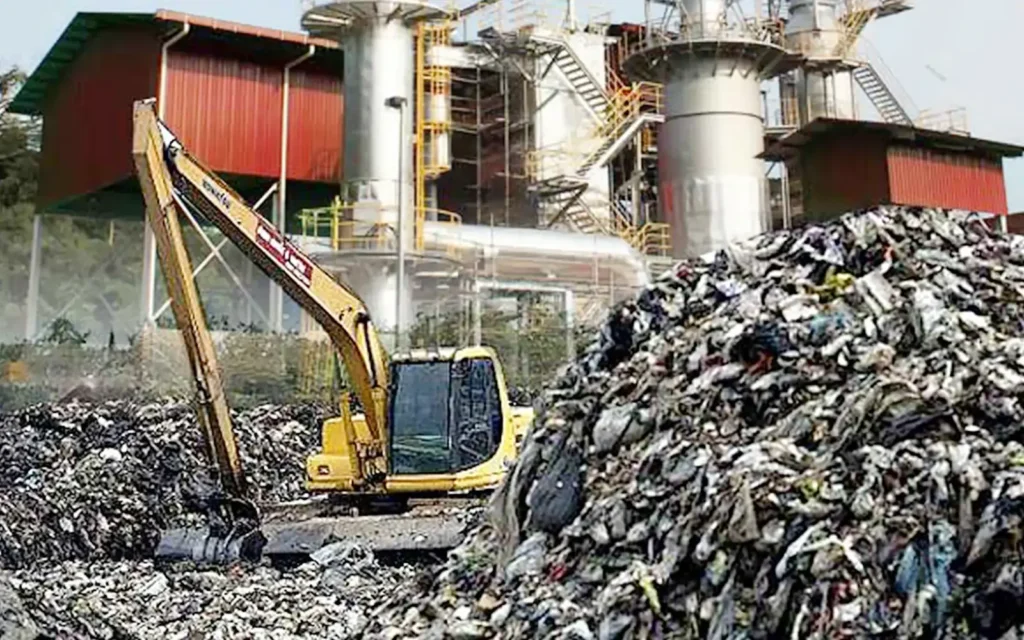In October 2021 Prime Minister Narendra Modi had declared a plan to make Indian cities garbage-free under Swachh Bharat Mission-Urban 2.0, with the Government of India allocating Rs. 3,400 crore to Maharashtra for the implementation of the Swachh Bharat Mission.
According to the Environment Status Report (ESR) for 2022-23, released by the Brihanmumbai Municipal Corporation, Mumbai generated 6330 metric tonnes (MT) of waste per day in 2022. With the two dumping sites in Mumbai — Deonar and Kanjurmarg — overflowing, a radical change in our approach to solid waste management is urgently needed.
As Maharashtra gets ready to go to the polls, we look at how solid waste management (SWM) has been tackled in the State over the past five years, and how instability in the government has affected this.
Problems related to solid waste management in Mumbai
The ESR states that 88% of municipal solid waste (MSW), which amounts to 4,500-5,500 tonnes per day (TPD), is sent to Kanjurmarg and is disposed of by using bio-reactor technology and windrow composting. While the Deonar dumping ground receives 12% of MSW which comes to 500 to 700 TPD. It is disposed of by dumping and levelling.
In an earlier interview given to Citizen Matters for a series on waste management, Ashwin Malwade of Ek Saath Foundation had pointed out, “Right now Deonar dumping ground, Kanjurmarg, Mulund, all of them are overflowing.”
The Deonar dumping ground opened in 1927, is the oldest in Mumbai and currently has 2 crore metric tonnes of solid waste. The heaps of waste rise as high as 40 metres, the same as the height of a 12-story building. Garbage dumping was started at the Kanjurmarg dumping ground in 2009-10, but operations had to be stopped due to legal entanglements, resuming in 2015. The Mulund dumping ground has stopped receiving MSW since 2018.

The Swachh Bharat Mission Urban 2.0 states: “Source segregation of waste at the place of its generation in following categories is fundamental to MSWM.” It goes on to list categories such as biodegradable waste, non-biodegradable waste, sanitary waste, domestic hazardous waste, construction and demolition waste and e-waste. It also mentions the importance of transporting the segregated waste in vehicles with separate compartments.
However, in Mumbai not everyone practises segregation at source. Kedar Sohoni, founder of Green Communities Foundation says, “There is no penalty for the residents if they mix it. Even if some society is segregating, there is complete lack of communication on how that segregated waste is going to be picked up. There is very little knowledge that there are different types of vehicles ideally which should be coming to a society if they are segregating their waste.”
He further explains that a lot of the collection work has been outsourced by the BMC and since the sub-contractors get paid by the volume of waste, it works in their favour if dry and wet waste goes together into the collection van.
Read more: Much of the segregated dry waste in Mumbai ends up in landfills; here’s why
Mumbai’s Solid Waste Management since 2019
When asked how much has improved in terms of solid waste management over the past five years Kedar says, “If at all it has become worse.” He adds that pre-COVID the implementation was better. “At least there were announcements saying that we are not going to pick up unsegregated waste. There were societies running helter skelter trying to figure out solutions, how to do composting.” Ashwin agrees that before the pandemic, the SWM rules of 2016 were being enforced better by the BMC.
One of the huge gaps in the enforcement of SWM rules is the fact that there is no elected municipal council in place. As Ashwin points out, “There is no corporator. Even if we have grievances, who do we take it to?”
Waste segregation was legally mandated in the Solid Wastes (Management and Handling) Rules, 2000. In a significant step, the Solid Waste Management Rules of 2016, have also placed the responsibility of segregation on the waste generator stating “source segregation of waste, a basic need for channelizing the waste to wealth by recovery, reuse and recycle.” But the system seems to be riddled with corruption with no punitive measures for the culprits.
Moreover, the Solid Waste Management Rules of 2016, amended in 2022, also hold the producers of materials like plastic responsible for recycling under extended producer responsibility (EPR). However, many FMCG companies show compliance only on paper. Kedar explains that in a raid by the CPCB six lakh fake certificates of compliance were confiscated.
When elected to power, Uddhav Thackeray had directed the state Urban Development Department (UDD) to create a state-wide plan for solid waste management, emphasising the importance of urban greening, segregation of waste and waste processing centres. Incidentally, the UDD Minister at the time was Eknath Shinde and had said at that time the department aims to achieve 100% waste segregation and processing.
Two years into their rule, the Environment Minister of the MVA inaugurated the ‘Solid Waste Management Vision 2030 project’, claiming that Mumbai would become a model city where solid waste management was concerned.
Read more: Is recycling the answer to Mumbai’s solid waste management woes?
Govt’s unimaginative response: Remediation of waste
One of the goals of Swachh Bharat Mission-Urban 2.0 is ‘Lakshya Zero’ dumpsite by remediating 16 crore tons of legacy waste dumpsites occupying nearly 15,000 acres of urban land. Legacy waste refers to waste which has been lying in dumpsites for many years.
In November 2023, chief minister Eknath Shinde formed a six member panel, with three members each from the BMC and the Ministry of Housing and Urban Affairs, to create an emergency plan to tackle solid waste and for remediation of legacy waste.
This process involves exposing all the waste to air with composting bio-cultures, with the goal of recovering all valuable resources: bricks, stones, plastics, metals, clothes, rags followed by its sustainable management through recycling, co-processing, road making etc. “Firstly, we have to move beyond making panels, we need to have some holistic action on ground,” believes Ashwin.
The fundamental problem with remediation of waste is that it is just a palliative measure unless it is done parallelly with steps like segregation at source and decentralised processing. As Kedar says, “It’s going to take them years to clear off that thing, and it’s not that no new waste is coming in. So you are nowhere close to clearing the landfill.”
Ongoing misery at Deonar dumping ground
The residents of the Shivaji Nagar-Mankhurd constituency who are affected by the presence of the Deonar dumping site have been saying that the incumbent MLA, Abu Azmi, who has been elected from here for three terms, has not been able to keep his election promises about the dumping ground or the biomedical waste processing plant.

The state housing department has decided to use a part of the dumping site where the BMC has stopped dumping waste after residents of areas like Mulund, Bhakti Park, Dahisar and Kurla posed strong opposition to house people affected by DRP.
Varsha Gaikwad, who was formerly an MLA from the Dharavi assembly constituency and is currently an MP from Mumbai North, responded on the microblogging site X, saying, “Dharavi belongs to Dharavikars. Why should they be uprooted and pushed to toxic wastelands like Deonar, where gas leaks still pose a health risk?”
Read more: Mumbai, here is what happens to the garbage you throw out
Waste to energy plants
A waste to energy plants W2E is being touted as the magical solution to our solid waste management problems despite experts warning that this will increase pollution manifold due to a range of reasons, particularly affecting those who live close to it.

While other countries in the world are either banning such plants or are phasing them out, we seem eager to embrace them with the Solid Waste Management Rules, 2016 mentioning the promotion of W2E plants as one of its points. This article recounts the horrors of the people working in and living near the Okhla waste to energy plant, issues that we can ignore at our own peril.
Solid waste management and unstable government
The past five years have seen major upheavals in the political landscape of Maharashtra, with never-before-imagined coalitions being forged and the government getting replaced. According to Ashwin, when the Uddhav Thackeray government came into power in 2019, there was some traction on environmental issues, but then we were hit by a global health crisis.
Ashwin says that not much has happened after the regime change and the present government is more pro-infrastructure at the cost of the environment. In fact, instead of appointing a separate Minister for the portfolio of the Ministry of Environment and Climate Change, it is held by CM Shinde himself.
The government which gets elected has its path cut out for them: making solid waste management a priority. Hopefully, they will not want to leave behind a legacy of garbage at the end of their tenure.